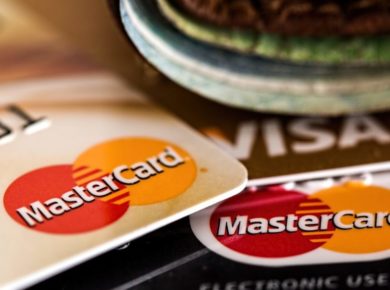After a long and expensive holiday season and with New Year’s resolutions around the corner, none of us has time to gradually recoup our losses. As much as I love long-term savings goals, sometimes you need a shot in the arm to get back on track and avoid falling into a dangerous debt cycle.
With that in mind, I’m going to list a number of tips that can lead to immediate savings starting, like, right away. Some might not work for you, others you’ll have already tried, and a few will be just what you were looking for. Results will vary, but I guarantee it’s possible to curb your spending so drastically that you can put an extra $1,000 in your bank account in about a week.
If the holiday hustle has you feeling broke and overwhelmed, don’t sit around and wallow in it. Take action, save money, and start next year out on the right foot. Here’s a 6-step, one-week plan that can lead to $1,000 dollars in savings and doesn’t require you to pick up a part-time job.
1. Weekend – Have a Yard Sale (+$150)
Before I get to the ways you can slow down your spending, how about a simple way to increase the cash you’ve got on hand? With all the travel and parties and family gatherings, a garage sale is likely the last thing on your mind right now. It might feel like a headache to organize, but taking a few hours on a Friday and the first half of the day on Saturday can go a long way toward offsetting all the gift shopping you’ve done or are about to do.
If you own a home, you undoubtedly have more stuff than you need. From clothes to tools to gifts you never took out of the box, you can sell items for a fraction of the original cost and still walk away with a fanny pack bursting with dollar bills. Don’t get caught up on the actual value of what you’re selling, just think about whether you’d rather have $5 or a thing you never use.
People enjoy going to yard sales, hoping to find a good deal even if they aren’t looking for something in particular. Especially during the time of year when everyone is hoping to find gifts on the cheap, your sale might make someone else’s Christmas effort that much better. And, on top of the money you can make, few things feel better than emptying unnecessary clutter from your home.
Don’t think too hard about it: find things around the house you no longer use or need, put those items on tables, throw up a “Garage Sale” sign in front of your house and try to get rid of everything. Then sit back and count your earnings.
2. Monday – Call the Cable Company (+$150)
If you really want to save, you cancel cable and see how much you actually miss all those channels. I’m pretty sure you can do without 90% of what comes with a standard cable package, but that’s not for me to decide. Instead of canceling straight away, give a call and see what promotional deals might be available. Oftentimes cable companies are working so hard to draw in new clients this time of year, they’ll have special incentives that they can offer to existing customers as well.
If there isn’t a promotional deal, you still have a very powerful phrase that might get you the savings you want: “I can no longer afford my cable.” Losing a customer is far more desirable than setting up a new user, so you can expect the representative on the other line to at least put some effort into keeping you around. Cable providers know they charge an arm and a leg and largely rely on customers not questioning their monthly bills. When you call and say you need a price break or you’ll have to cancel your subscription, there’s at least a 50% chance you’re going to get that bill reduced.
They may only lower your rate if you agree to go with a lesser package, which you should almost certainly do. Frankly, with all the streaming services and YouTube TV offering 50+ channels, it’s hard to justify paying hundreds of dollars for cable. Stop pretending you need 600 channels and think about what you can do with an extra $150 each month.
3. Tuesday – Call the Phone Company (+$50)
If you have a landline, it’s probably part of your cable TV or internet package. If it’s not, it should be. No need to pay a separate bill for something that’s becoming more outdated with every passing minute.
The big savings will come from whoever provides your cellular service, and this will work much like it did with cable. The cost of losing a customer far outweighs whatever they’ll lose by giving you a discount, so say that you might have to discontinue service and see what they’ll offer to make you stay.
With cell phone bills, you also have a few other savings tactics you can employ. Bundling service with family members will make everyone’s bill go down, as will reducing your monthly allotment of data. My wife and I spent however many hundreds of dollars for unlimited gigabytes for a few years before realizing we were pretty much constantly on WiFi and could get by spending less money on less data. Over the past year, that alone has saved us nearly $1,000.
We need cell phones in order to function in this world, and the service providers know that and use it against us. Nevertheless, we don’t have to play by their rules because they still need our business to stay open. Call your provider and see how you can lower your bill without giving up the features you need.
4. Wednesday – Call the Insurance Company (+$200)
No one likes dealing with car insurance, so once you have a plan and know what your premium will be, you leave it alone, pay your bill, and hope you don’t have to file a claim anytime soon. Fortunately, this means you might be able to save heaps of money just by tweaking the insurance policy you’ve had for the last decade. Three ways you might be able to reduce this bill:
1. Good driver discount
2. Increased deductible
3. Insurance bundle
If you’re a good driver with no points on your record, you might be able to simply call and ask for a cheaper policy. Insurers L-O-V-E clients who don’t need to use the coverage they pay for, because safe drivers who avoid collisions pour money into the insurance company without every taking money out. A few providers offer these discounts without being asked, but others just need a gentle nudge to reduce your rate and make sure you remain a faithful client.
If you already have a good driver discount or aren’t eligible for one, you still have options for saving. Your premium rate and deductible go hand in hand, so agreeing to pay more in the event of a collision should lower your annual premiums. If you currently have a low deductible – $250 or $500 are on the lower end – you might consider taking that number up to $1,000 and seeing what that does for your monthly bill. If your provider knows they’re off the hook for the first $1,000 when a claim gets filed, they’ll usually have no problem lowering your premium.
Last but certainly not least, bundling one policy with another almost always drops cost. If you pay two insurance providers, decide which company you like best and merge those policies. These big agencies rely on volume, so the more policies they can push the lower the rates will be. Make sure all the cars in your household and the house itself are under the same umbrella, and then don’t hesitate to see what rival insurance providers will offer to make sure you’re getting the best deal.
A handful of studies have shown that we Americans overpay for car insurance, so it’s up to you to find out how much you could and should be saving. After this mid-week phone call, you’ll feel a whole lot richer.
5. Thursday – Cancel Every Unused Subscription (+$100)
There are a handful of apps with the sole purpose of finding and ending unnecessary monthly payments. The fact that this type of service exists – provided by more than one company – means way too many of us have way too many subscriptions.
For whatever reason, people would rather pay $10 a month for a defunct AOL account than get on the phone for five minutes to make sure that account gets closed and the charge stops recurring. If you have an aversion to cancelation phone calls, you can use an app like Truebill or Trim and let a third party do the work for you, though you might end up incurring additional fees in your quest to stop paying fees. The better choice would be to put on a Christmas movie and sit down with your laptop, pouring over all your credit card and bank statements. As you go, you’re likely to find any of the following:
● Unused streaming services
● Abandoned gym memberships
● Unnecessary premium upgrades
● Useless magazine subscriptions
● Forgotten gaming memberships
Anyone with multiple credit cards and bank accounts can fall victim to these sneaky recurring bills. If you don’t budget super attentively, you might miss the fact that you pay $12.99 a month for some online membership you don’t remember signing up for.
Cancelations shouldn’t be limited to the things you forgot about, either. As much as you think having a gym membership is good for your health, you don’t lose weight simply by paying $50 a month and not getting on the treadmill. In fact, simply having a gym membership you don’t use can adversely affect your health, as the prospect of using your expensive membership keeps you from actually doing something else like jogging or riding your bike. If you pay to use a workout facility and don’t ever go to said facility, cancel that membership ASAP and start thinking of a better, cheaper way to get in shape.
It’s so easy to sign up for a service that costs $10/month, because what’s a measly $10 spent over 30 days? When you add up these expenses and then think about what you’re getting for that money, it quickly becomes apparent that you need to sever ties with these subscriptions and keep your money for yourself. Hitting the “cancel membership” button will be a great feeling near the end of this week of savings.
6. Friday – Plot a Week of Eating (+$350)
I’m keeping the biggest saver for last because this one takes a little more mental preparation than the previous steps. Any family with more than two people spends a lot of money on food each week. If you’re feeding a family of four, chances are you spend between $1,000 and $1,500 each month, if not more. Our eating habits and the way products are sold make it hard to cut back on dining expenses, but it can be done and the results will be unmistakable.
First off, take any restaurant visits off your calendar. Whether it’s the family dinner, drinks with friends, or just lunch during your work shift, it’s gotta go. As much as you feel like a quick stop at the deli saves you time, the price just isn’t worth it. With taxes and tip and the insane markups you see at even the cheapest restaurants, dining out is the number one cause of BADS (Bank Account Depletion Syndrome).
Depending on your propensity for eating out, skipping restaurants might save you $350 alone. For those of you who already dine in more often than not, you can still save hundreds of dollars by creating a specific meal plan. If this concept is foreign to you, I recommend you check out the Plan To Eat app, which helps you collect different recipes that use the same ingredients, so each can of beans and head of lettuce you buy becomes a little more productive. The app also puts a handy grocery list right on your phone so you don’t have to keep track of loose paper between home and the store.
Strategic shopping makes it so easy to turn $20 worth of groceries into multiple meals for multiple people. When you figure out a dinner for each night of the week, using the leftovers from Monday’s meal for whatever you’re cooking on Tuesday, the planning pays off with both savings and variety. Cooking can feel exhausting to the point of overwhelming, especially for those of us working more than 40 hours each week. However, once you get into the routine of shopping and making simple meals at home, it feels less daunting and has a huge impact on your wallet.
You can quickly turn food costs into extra funds, all you have to do is commit. Don’t assume it’s too hard, just give it a try for one week and see how big the financial gains can be.
If you can save anywhere from $500-1,000 in just one week, think of what you can do with a full year of thoughtful spending and saving. You might not be able to cancel subscriptions or reduce your cable bill each month, but you can always be on the lookout for ways to make your money go further.
I hope you find these tips useful and you’re able to head into next year in a little better shape than years past. When you dedicate some time to cutting back on extraneous costs, it doesn’t take long before you start seeing the positive effects.






